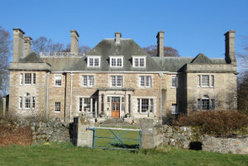 I had an opportunity the other day, along with a few other writing friends, to tour a publishing house, meet some editors, and perhaps pitch a story while I was there. It was an interesting opportunity to peek behind the curtain and see how books are created. However, the “pitch” part made me nervous in the days leading up to it. I realized why I was so nervous the day before. It was much like preparing for a job interview. The preparation steps are nearly identical. Here are some similarities I found: Know the Interviewer – Or in this case, know the person to whom you are pitching. I assumed I would pitch to an editor for their romance line. I already had some general knowledge of the publisher, but also looked at their website and at each editor’s profile for more details. When I interviewed with companies or potential clients for my day job, I used similar sources to gain background material. Know Yourself – When I was on job interviews in the past, this meant I should be ready to talk about my past experience, provide specific examples, and demonstrate why I was a good fit for the company. When pitching, this means I should be ready to talk about my writing qualifications, succinctly describe my story, and show why it is a good fit for the editor or agent. Questions to Answer – There are always questions one should be prepared to answer. An interviewer might ask “What is your greatest weakness?” while an editor might ask “What is the hero’s internal conflict?” Or they might ask other core questions, designed to verify how well I understand my own story. Whether interviewing or pitching, having good answers to expected questions is key. Questions to Ask – One of the common interviewing mistakes people make is not preparing a few questions to ask the interviewer. I think the same holds true for pitching. In both types of events, the person on the other side of the table wants to know you are informed and interested. They want you to prove you understand this is a chance for both of you to learn more about the other person. Dress Appropriately – Most people automatically dress a little nicer for a job interview. In my opinion, the same holds true for pitching. I want the other person to see that I view my writing as a business and I am taking this seriously. So, did recognizing the similarities help? Well, I was still nervous. And afterward, I remembered one more common rule: Don’t be overtired when you go to either a job interview or a pitch session. It doesn’t help! But the tour was fascinating, the people we met were very gracious, and I got a request out of it. All-in-all, it was the most fun I ever had on an interview.
1 Comment
I found something to add to my bucket list today. I stumbled across an organization which combines vacations with historical preservation. The organization, called Adventures in Preservation, was founded in 2001 with the combined goals of saving historic buildings and providing people with new experiences during their vacations.  Their mission statement reads “Connecting people and preservation through enriching experiential programs that safeguard heritage and foster community sustainability.” Basically, participants pay a reduced rate to stay somewhere interesting, in return for helping with small projects as a part of restoring an old building. I’m in! The organization sets up several projects each year, generally during the summer. To me, they all sound like a great experience. Here are the ones they listed for this summer: Cracker House Project – restoring old windows and a herringbone walkway at the Italianate home of Frank L. Sommer. In 1873, he created the Premium Saltine Crackers which we probably all remember from our childhood, and which are still sold today. Greenhouse Conservation – northern Scotland is calling me! Volunteers on this project will stay in the beautiful manor house on the Burgie estate (picture is to the right) while they help restore an old Edwardian greenhouse. Archeology at Fairfield – a slightly different project, in that it combines both archeology and preservation. This site near Williamsburg, Virginia is the former Fairfield Plantation, which raised tobacco in the 18th and 19th century. Building Documentation – another different project, which focuses on a historical district located in Gyumri, Armenia. Volunteers will help restore an old wooden balcony, and others will document other old buildings in the area. Conservation Projects – France, anyone? This project is at the Chateau de Parthey, which has been owned by the same family since 1354. Two efforts here include restoring an old tapestry, and documenting an old chapel so it can be rebuilt. All of these excursions provide a chance to learn something about an old building and maybe pick up a new skill. They also include a nice place to stay and an opportunity to see something of the surrounding area. What’s not to like? If you are as interested as I am in participating in one of these excursions, check out Adventures in Preservation (http://adventuresinpreservation.org) for more information. Maybe I’ll see you in one of the groups!  Janet Arnold was a British clothing historian and costume expert who lived and studied in the 20th century. And in my opinion, she was a flat-out genius. In researching historical details for my Georgian romance, I am studying Book 1 of Janet’s “Patterns of Fashion” series, Englishwomen’s Dresses And Their Construction, circa 1660-1860. She spent untold hours examining actual clothing, depictions in artwork, and even correspondence to determine how various items of clothing were made. No detail was too small for her to record. Since I love learning the details of life in earlier times, I found it all fascinating. Here are some of my favorite bits: Measuring Fabric In the 1600s and 1700s, the length of fabric was measured in “ells.” However, there were French ells and English ells. And there were French inches and English inches. One English ell was about 45 English inches long, while one French ell was approximately 43 French inches long. A French ell (43 French inches) was roughly 46 ½ English inches. Any English person using French directions to create a dress must have had a very difficult time of it! Sizing a Dress It all started with a woman’s measurements. Since the trades people often had little education and no paper patterns, they needed a simple way to know how to size and layout the components of a dress. For many, it all started with a simple strip of paper. The dressmaker put 16 notches down the length of a strip of paper. Each notch was a specific measurement, from the depth of the neckline to the length from waist to ground, and even the width of fabric needed for the pleats over the hoops. Creating a Masterpiece A dressmaker needed few tools to work. In addition to the strip of measurements, she only needed a pair of scissors, needles, a thimble, thread, and an iron. With this and several ells of fabric, she could create enduring beauty. Lessons Learned To me, there are two key lessons from all of this. The first is a reminder of how skilled the dressmakers (and other crafts people) were hundreds of years ago. Everything they knew, every design they conceived, was born and lived in their memories. In the days before readily-available paper, there was no other way to retain the knowledge. And the second lesson, is a reminder that yes, Janet Arnold is a treasure to anyone who wants to understand the nuts and bolts (or the needles and thread?) of how people made their clothing in times past. I am so grateful there are people like her willing to spend the hours needed to preserve such knowledge for the rest of us. Check back with my blog in the future. I will periodically share other favorite research books or bits of fascinating historical trivia from my research. |
AuthorI write historical fiction, and I invite you to share the journey to published author with me. Archives
December 2022
Categories |

 RSS Feed
RSS Feed
